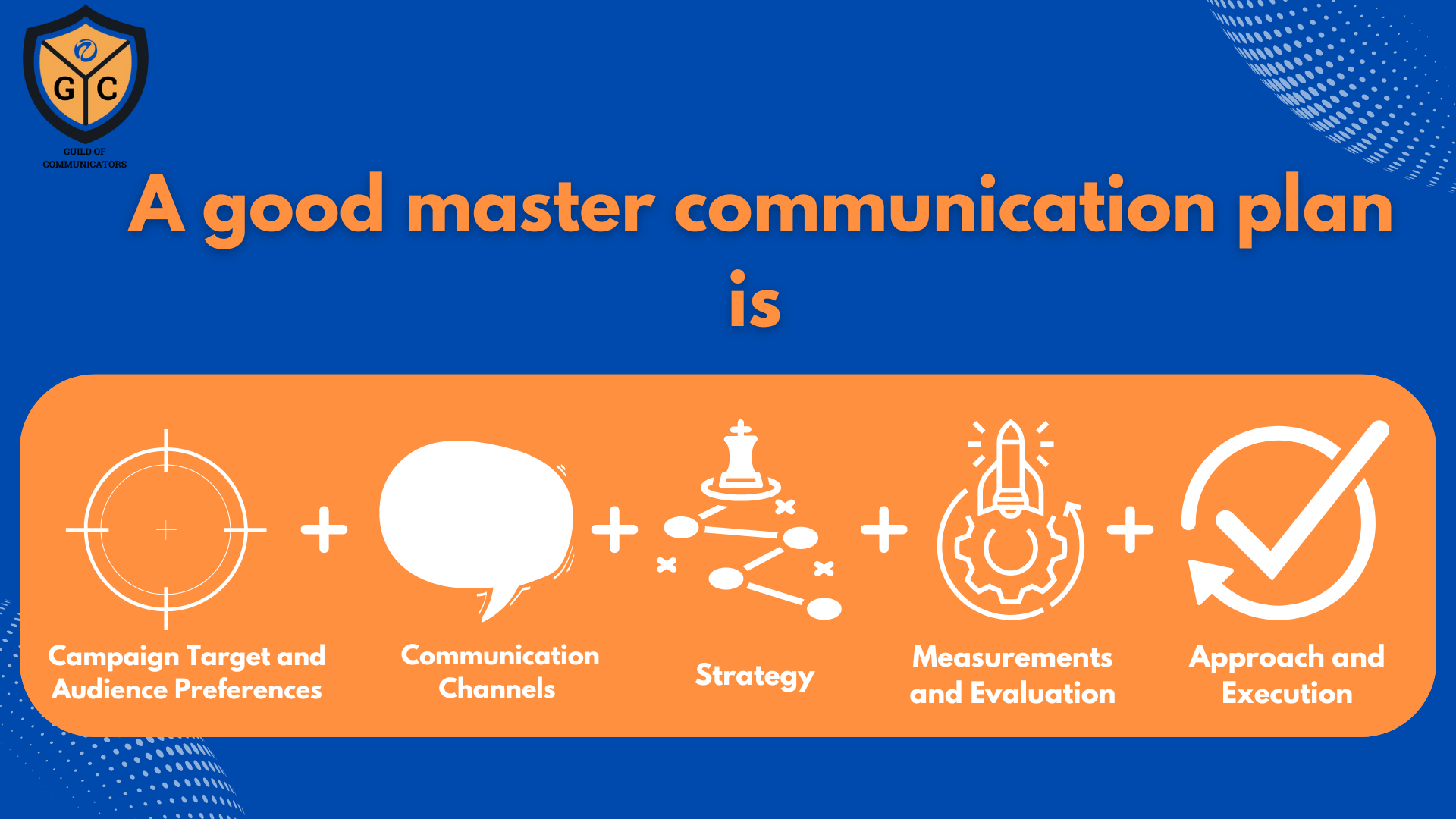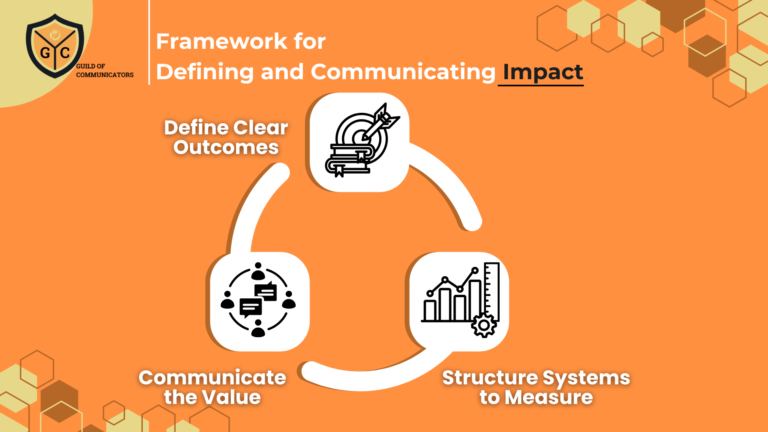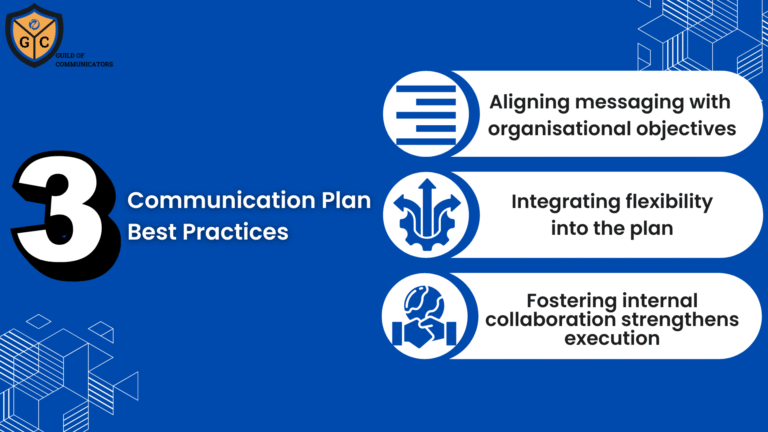A master communication plan is an essential blueprint for guiding all communication efforts throughout the year.
It serves as the strategic framework that outlines your goals, the key messages you need to convey, and the channels through which you will engage your target audience.
Every financial year, organisations create a master communication plan to ensure alignment between communication activities and broader business objectives. This ensures consistency, maximises resources, and improves the chances of achieving successful outcomes.
But why is it so critical to create one annually, and what happens when it’s missing?
The Cost of Skipping a Master Communication Plan For Individual Campaign Plans
Without a master communication plan, your communication efforts are likely to lack direction, leading to disjointed messaging and inefficiencies.
Teams may find themselves working in silos, with no clear alignment between their activities and the broader organisational goals. This lack of coordination often results in campaigns that are inconsistent and reactive, failing to leverage opportunities as they arise. Moreover, without a centralised plan, it becomes difficult to ensure that your messaging reaches the right audiences through the appropriate channels, further diluting the impact of your communications.
In addition to operational inefficiencies, without a structured approach, you risk investing time and budget into campaigns that may not align with your target audience’s preferences or the overall strategic objectives of your organisation. This leads to missed opportunities for engagement as well as strains your resources, which could otherwise be optimally allocated to high-impact initiatives. Over time, these inefficiencies accumulate, leading to diminished returns and a weakened communication function.
Perhaps the most concerning impact of not having a plan is how it affects long-term credibility and influence within the organisation. A lack of preparation makes it difficult to respond effectively to emerging challenges or changes in the market, leaving the communication team in a reactive stance. In such situations, other departments may perceive the communication team as underprepared, lacking foresight, and incapable of providing strategic counsel. This erosion of trust can limit your ability to influence decision-making at higher levels and prevent you from positioning yourself as a key player in organisational strategy.
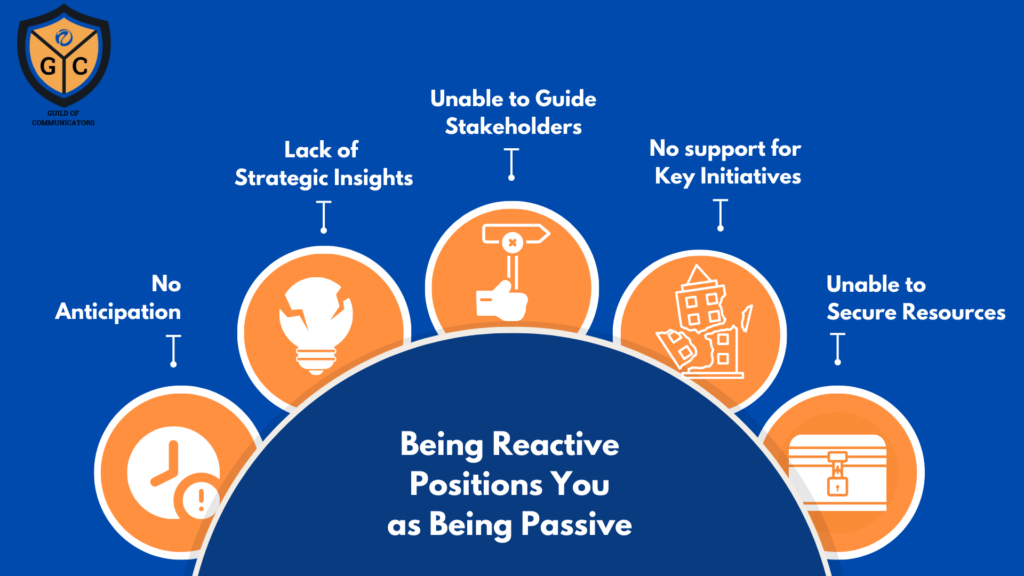
The Hidden Risks of Not Being Seen as a Communication Leader
Failing to establish a master communication plan diminishes how you are perceived as a communicator within the organisation.
Without a structured, forward-thinking approach, it’s easy for others to view you as someone who must be constantly guided, rather than a capable leader. This lack of strategic planning can give the impression that you’re merely reacting to circumstances instead of proactively shaping them. Over time, this perception can erode your professional credibility, leading stakeholders to lose confidence in your ability to drive meaningful communication initiatives.
Moreover, when stakeholders step in to provide direction, it shifts the dynamics of your role from one of leadership to that of support. Instead of being seen as a strategic advisor, capable of steering the conversation and providing valuable counsel, you become someone who follows orders and executes on predefined directives. This limits your influence and reduces the value of the communication function within the organisation. Being seen as someone who needs constant oversight places a ceiling on your ability to lead, affecting both your individual career progression and the broader perception of your team’s role.
The consequences of this diminished credibility are far-reaching. Without a well-thought-out plan, you lose the ability to anticipate challenges, offer strategic insights, or guide stakeholders through complex communication issues. This reactive posture prevents you from shaping long-term strategies and, ultimately, positions you as a passive participant in decision-making processes. When your expertise is questioned, it becomes harder to gain support for key initiatives, secure necessary resources, or drive impactful campaigns. Over time, the lack of leadership may even affect the organisation’s overall communication success, putting it at a competitive disadvantage.
The Importance of Audience Insight in Crafting Your Plan
With a clear understanding of why you need a master communication plan. Here’s the first and most critical step in preparing your plan.
You must define your target and gain a deep understanding of your audience’s preferences. Without a clear target, your efforts are likely to lack focus, resulting in generic messaging that fails to resonate.
Identifying your audience involves segmenting your stakeholders based on demographics, behaviours, and communication preferences. Understanding who your audience is and what they care about ensures that your messaging speaks directly to their needs and challenges, making your communication more relevant and impactful.
Research is a vital part of this process. By gathering insights into your audience’s preferences—whether they favour email communication, social media engagement, or in-person events—you can tailor your approach to meet them where they are most receptive. Audience preferences also change over time, so it’s crucial to stay updated with trends and shifts in behaviour. This allows you to refine your communication channels and tactics to better reach your target audience, maximising engagement and effectiveness.
Additionally, defining your campaign target helps in prioritising resources. Knowing which segments of your audience are most critical to your communication objectives allows you to focus your efforts where they will yield the highest return.
By taking the time to understand your audience upfront, you position yourself for success right from the start.
Why Stakeholders Trust a Well-Prepared Communicator
Being prepared with a master communication plan provides a significant advantage when managing relationships with stakeholders.
When stakeholders see that you have a well-structured, thought-out plan in place, it instills confidence in your ability to manage communication efforts strategically. This preparation positions you as a proactive leader who not only understands the organisation’s objectives but also anticipates potential challenges and opportunities. It allows you to offer well-timed insights and solutions, which helps strengthen your credibility as a trusted advisor in communication matters.
Moreover, preparation enables you to guide the conversation with stakeholders more effectively. Instead of reacting to last-minute requests or crises, a solid plan ensures you are driving the agenda, providing direction, and aligning communication efforts with the broader business strategy.
This proactive approach fosters stronger partnerships, as stakeholders are more likely to view you as a key contributor to achieving organisational goals. Ultimately, this strategic positioning gives you greater influence in decision-making processes, while also ensuring that communication efforts remain aligned with the needs and priorities of the organisation.
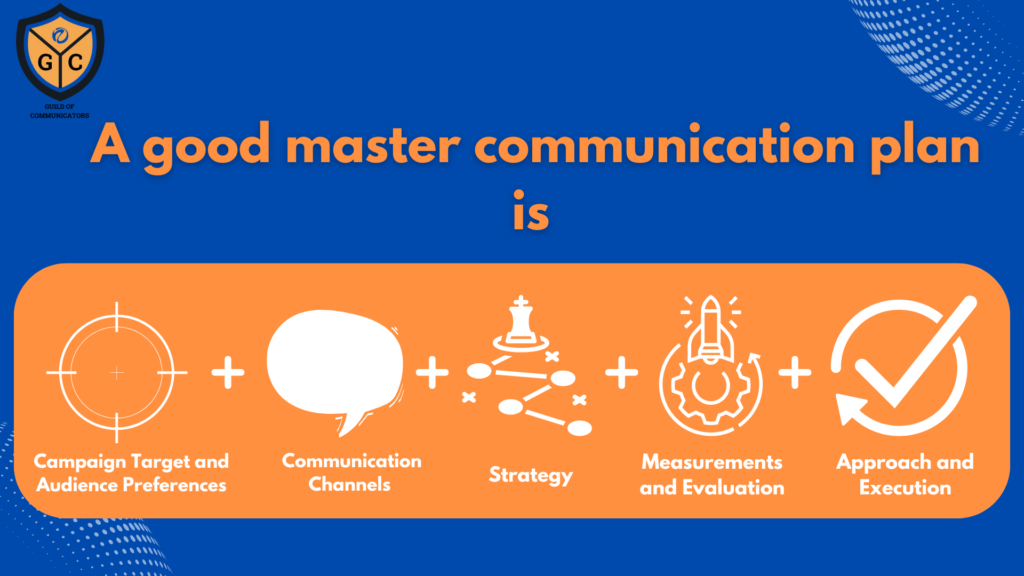
The Five Essential Steps to Crafting a Master Communication Plan
A master communication plan is not just about mapping out actions—it’s about building a strategic framework that guides every communication effort throughout the year. By following a clear structure, you ensure that all activities align with your goals, resonate with your target audience, and are executed efficiently.
To develop an effective plan, you must incorporate five essential components, each contributing to a comprehensive and well-rounded approach.
Campaign Target and Audience Preferences
Begin by clearly defining your campaign goals and identifying the specific audiences you aim to engage. Understand their preferences—whether they prefer digital communication, in-person events, or social media platforms—and tailor your messaging accordingly. This ensures your campaigns resonate and elicit the desired responses from your target groups.
Communication Channels
Once you know your audience’s preferences, select the right communication channels to reach them. Different audiences respond to different platforms, so it’s essential to choose the most effective channels, whether that’s email newsletters, social media, direct mail, or media relations. This ensures your messages are delivered in the most impactful way possible.
Strategy
Your strategy is the backbone of your communication plan. It outlines how you will achieve your goals, combining insights into your audience with your organisational objectives. This might include key messages, tone, timing, and the overall approach that will be used across various channels. A solid strategy keeps your team focused on the big picture while ensuring consistency in messaging.
Approach and Execution
With your strategy in place, detail the specific tactics and actions required to execute it successfully. This might include content creation, media outreach, event planning, or digital marketing initiatives. Outline the timeline, responsibilities, and resources needed to ensure smooth execution and trackable progress.
Measurements and Evaluation
Finally, ensure you have mechanisms in place to measure the success of your communication efforts. Define KPIs (Key Performance Indicators) that will help you assess whether your campaigns have met their objectives. Regular evaluation allows you to make data-driven adjustments, optimising your efforts over time.
This is your basic roadmap for success. This approach enables you to stay aligned with organisational objectives, and allows you to anticipate challenges, optimise resources, and drive meaningful outcomes.
A well-prepared plan strengthens your position as a trusted advisor and ensures that your communication efforts lead to lasting impact.
*****
Join the Guild of Communicators at www.gocommunicators.com.
The Guild of Communicators (Go Communicators) stands as the preferred community for communicators seeking to elevate their craft. Through our Centre of Excellence, we provide best-in-class frameworks, fit-for-purpose resources, and opportunities that support members in achieving professional excellence.
We provide the following resources, tools and opportunities to members:
- Best-in-Class Resources: We provide our members with access to frameworks, playbooks and tools that empower them to achieve and maintain professional excellence.
- Continuous Learning and Growth: Through our comprehensive training programmes, workshops, delivered digitally, 24/7 and in-person, we support the ongoing professional development of communicators.
- A Supportive Network: GOC fosters a vibrant community where communicators can connect, collaborate, and support each other, creating a network that champions mutual growth and success.
- Shared Knowledge and Expertise: Our members benefit from the collective wisdom and experience of a diverse group of communication professionals, enhancing their skills and perspectives.
GoCommunicators is dedicated to amplifying the impact and value that communicators bring to their organisations, highlighting their crucial role in driving success and growth.
We equip our members with the strategies and tools needed to become influential leaders and business partners within their organisations, enhancing their ability to drive positive change and outcomes.
Through our support and resources, communicators can demonstrate clear, measurable outcomes that showcase their value and impact, reinforcing their importance to their organisations.
Join the Guild of Communicators at www.gocommunicators.com
Subscribe to join over 1500+ communicators and brands getting value every Tuesday while reading A Communicator’s Perspective, our weekly newsletter.

